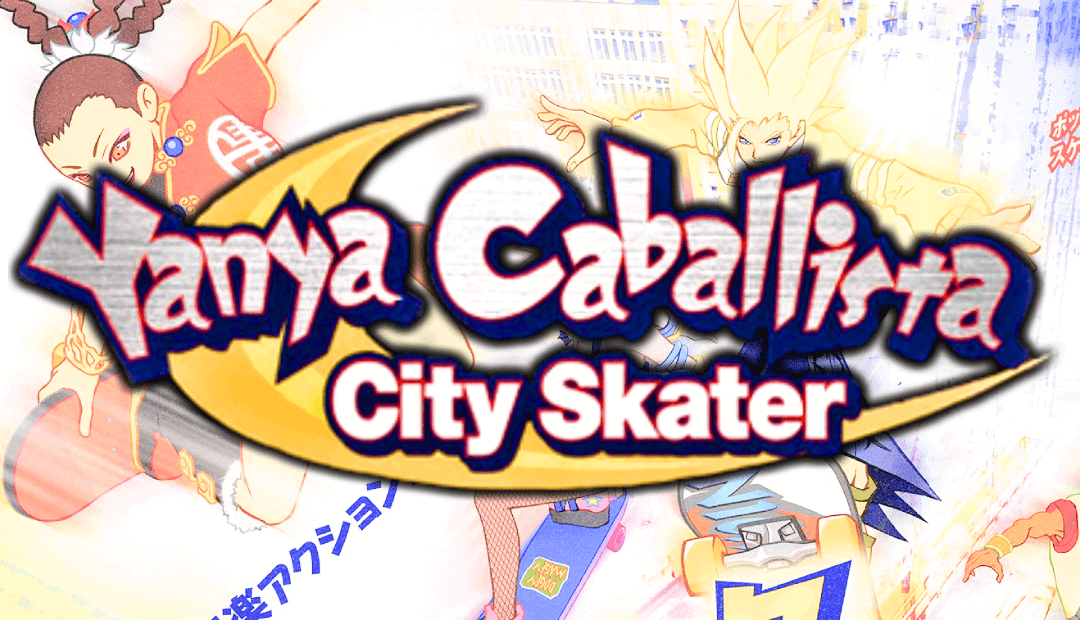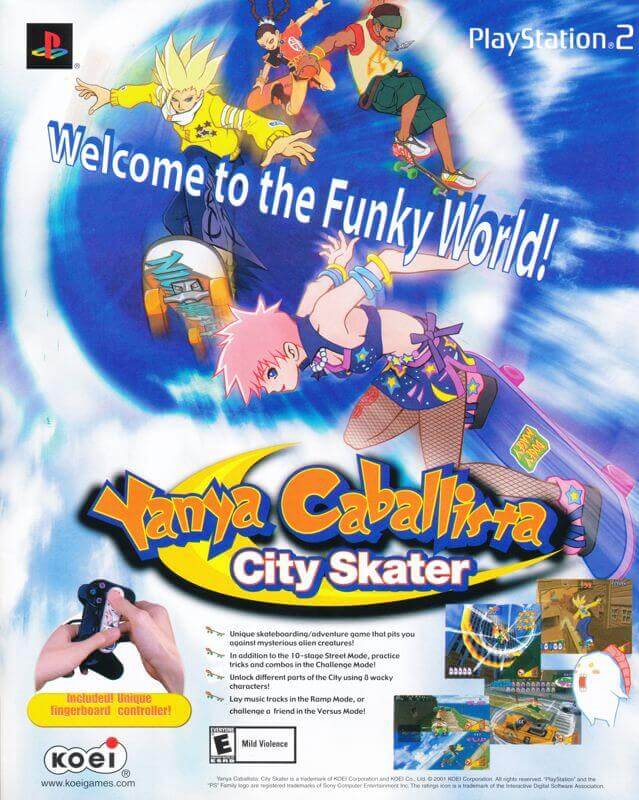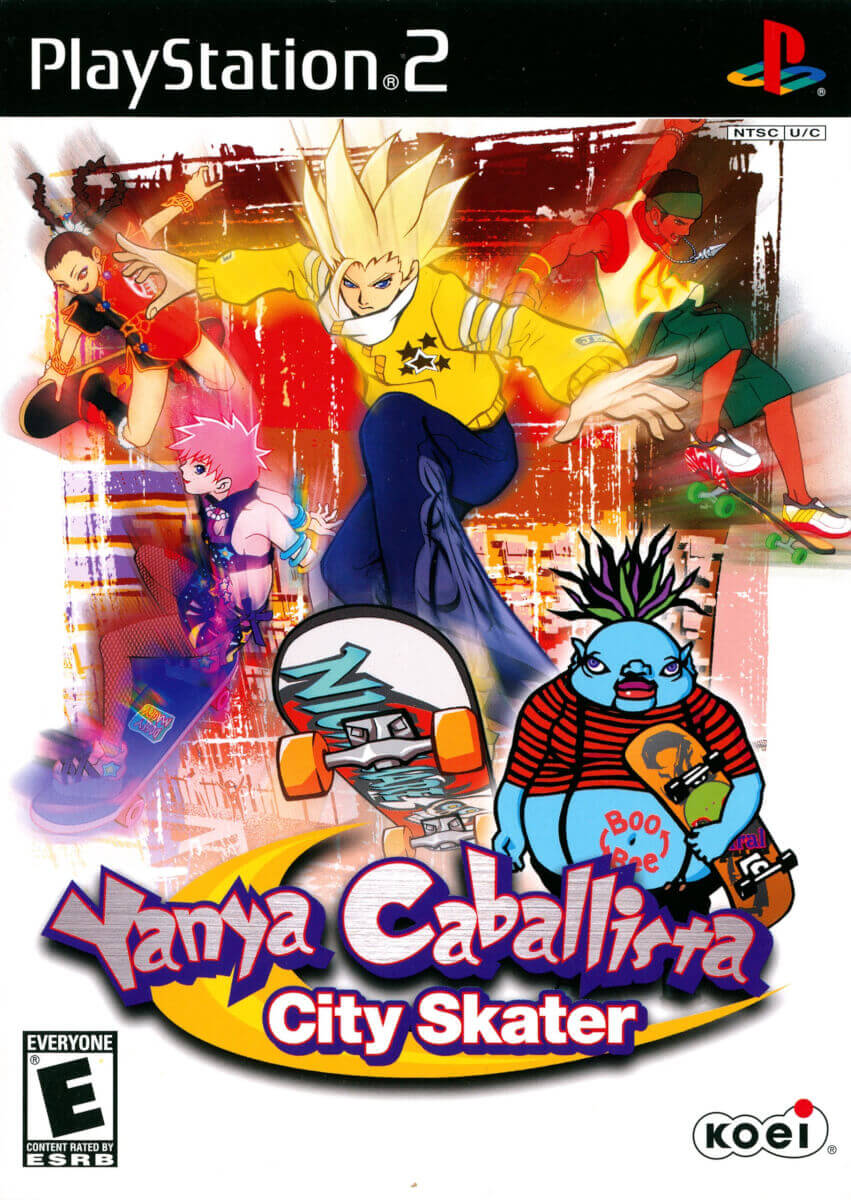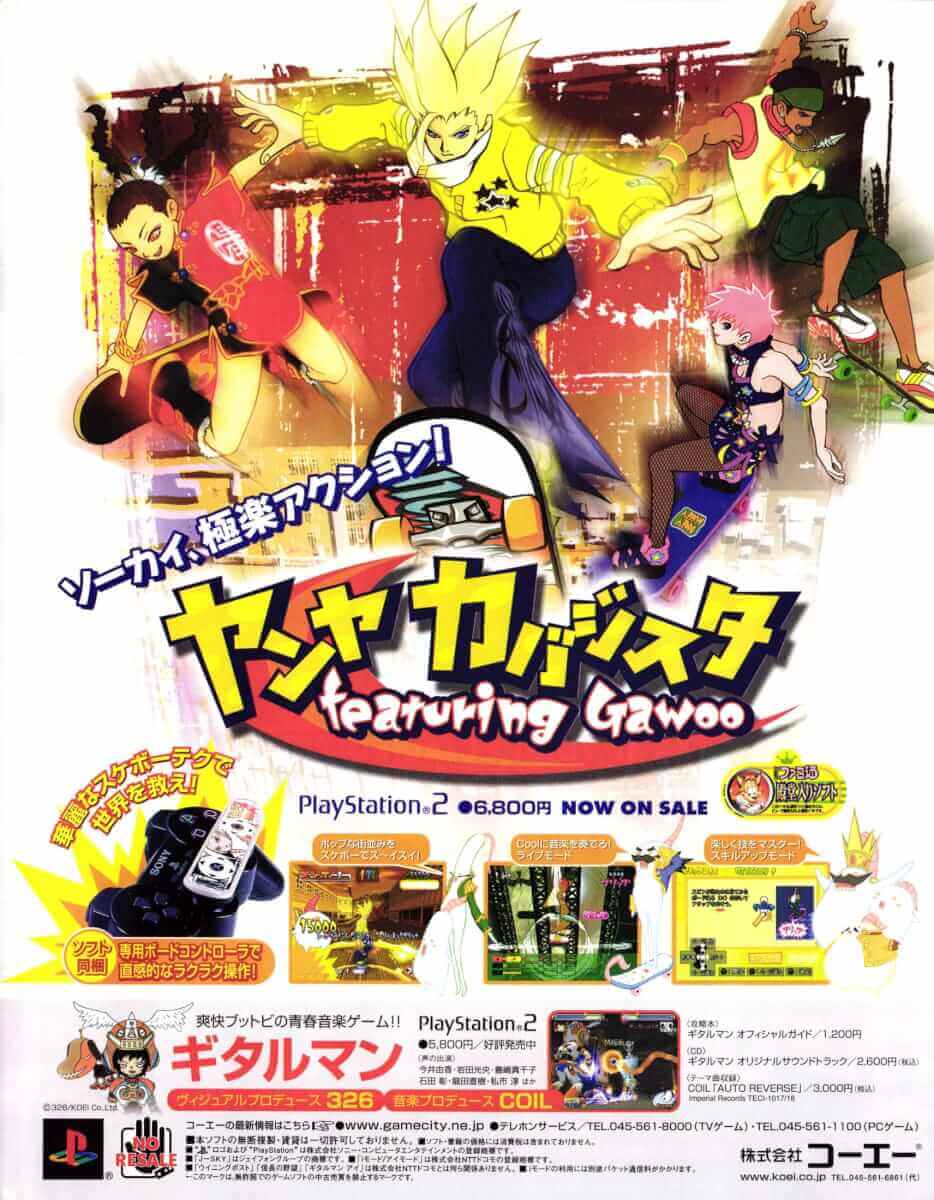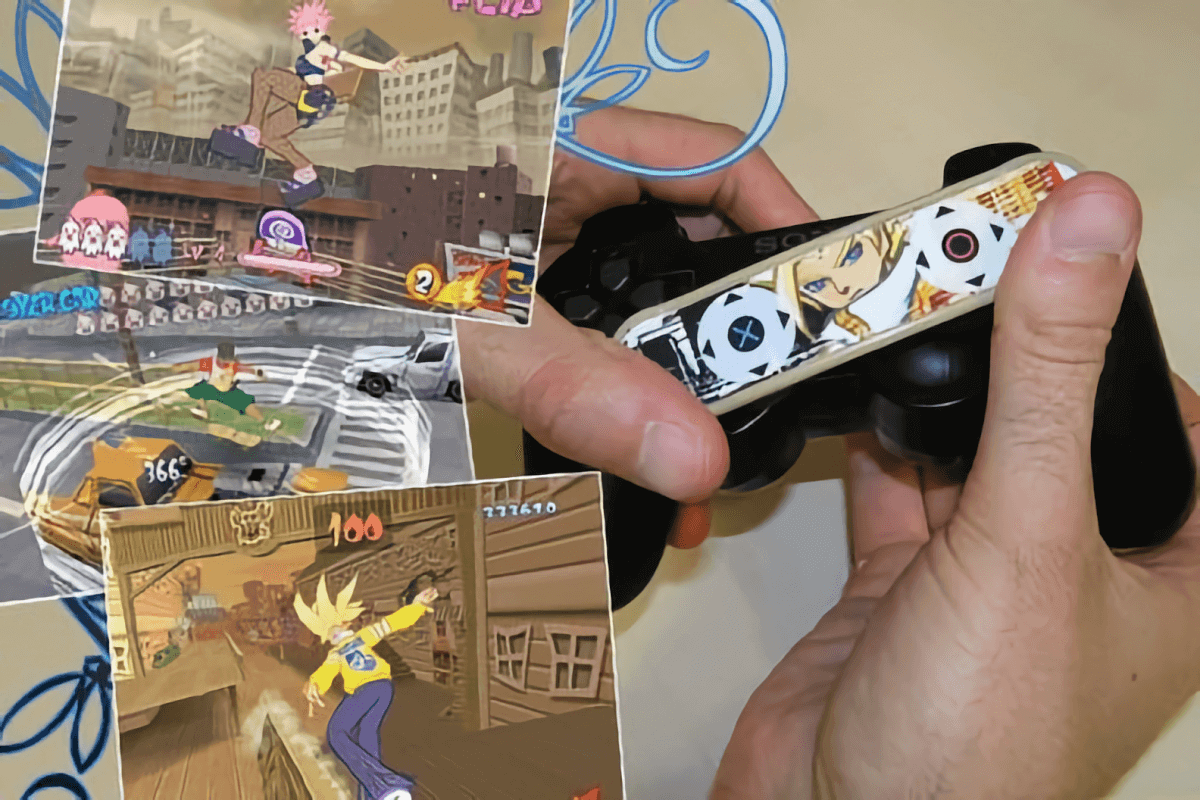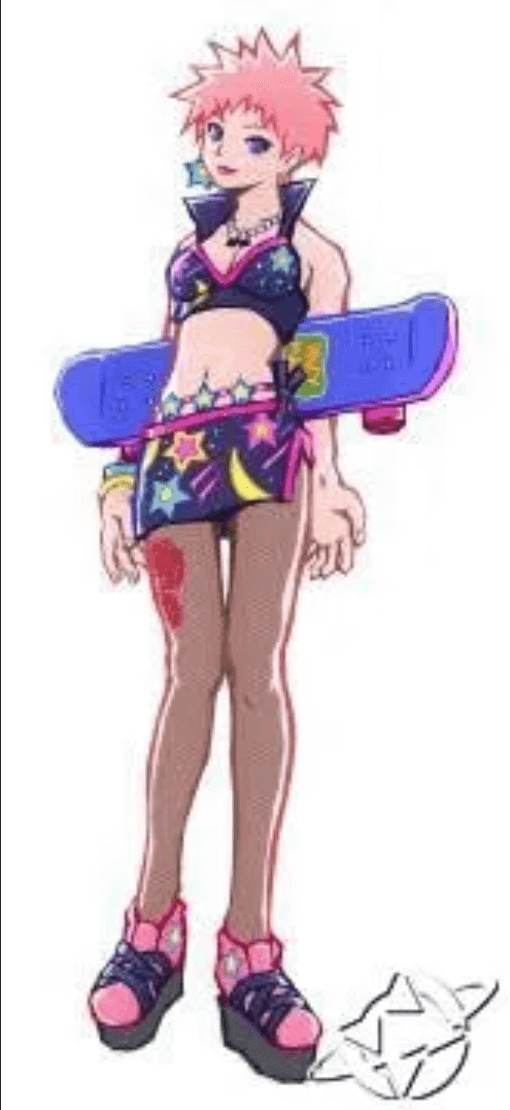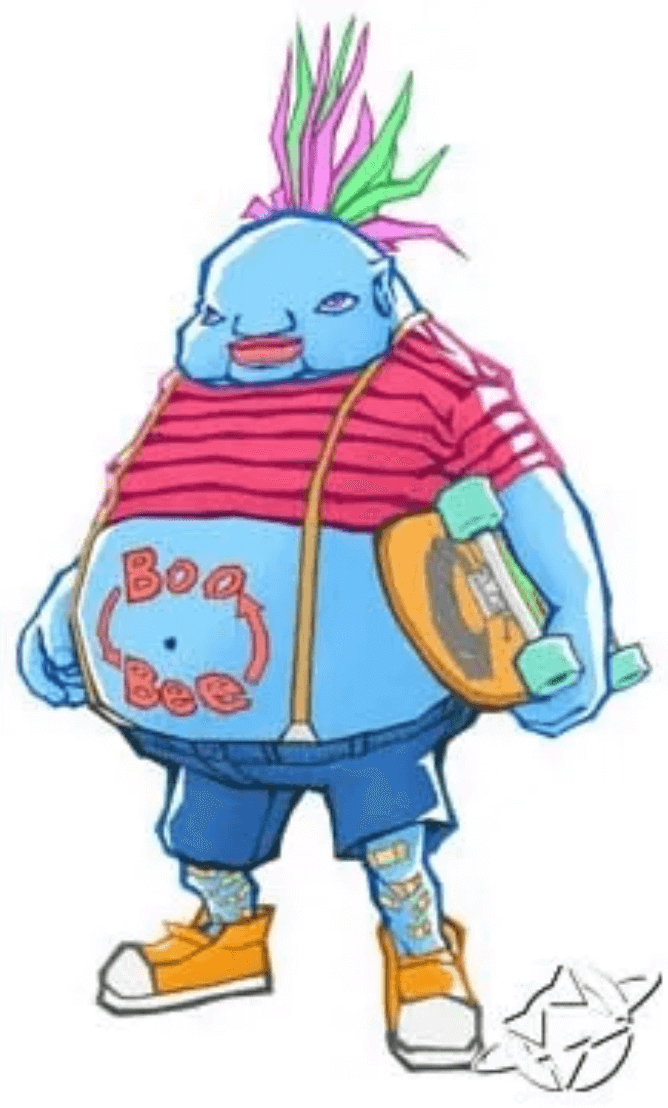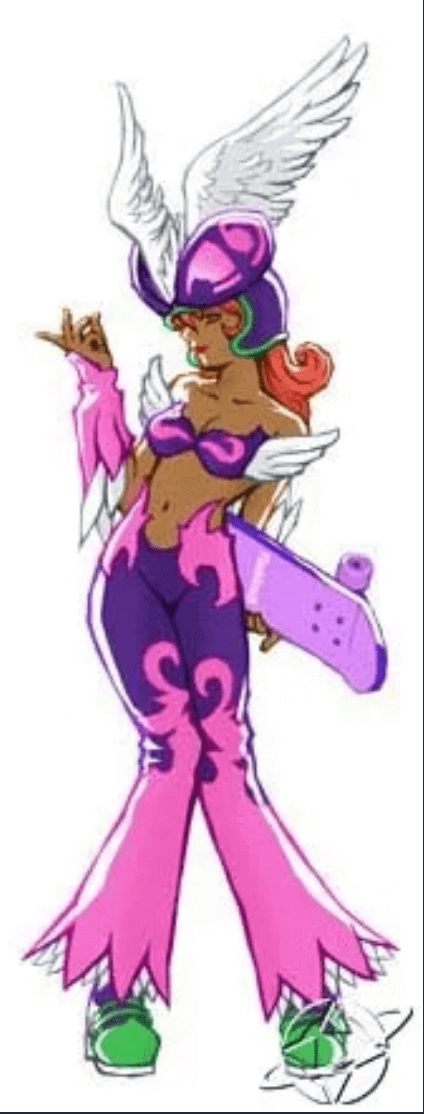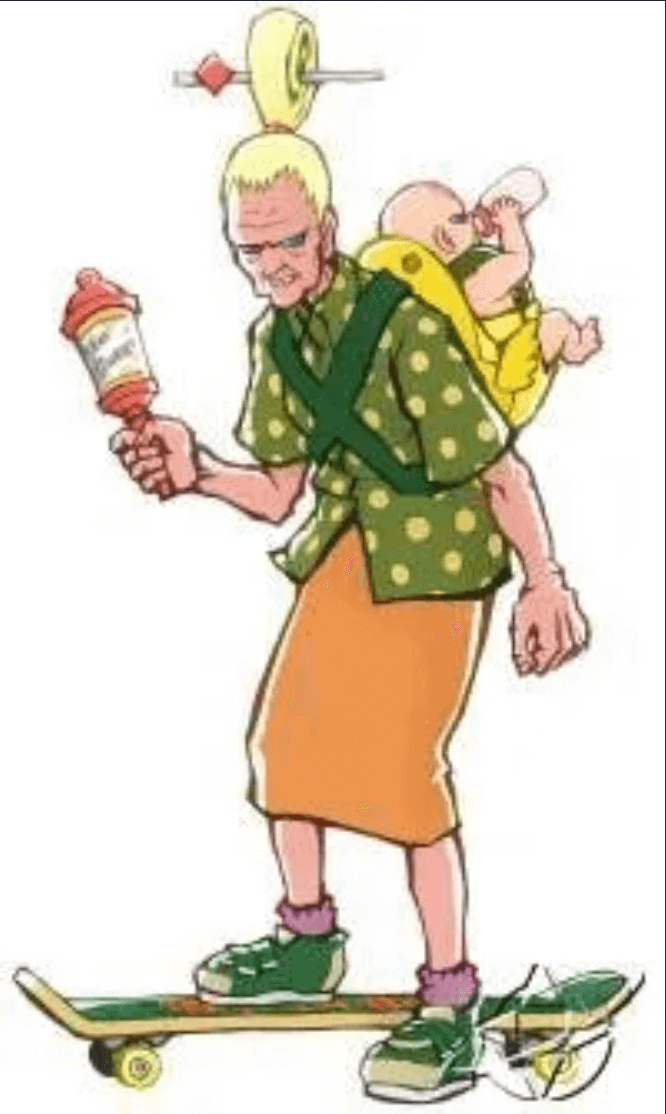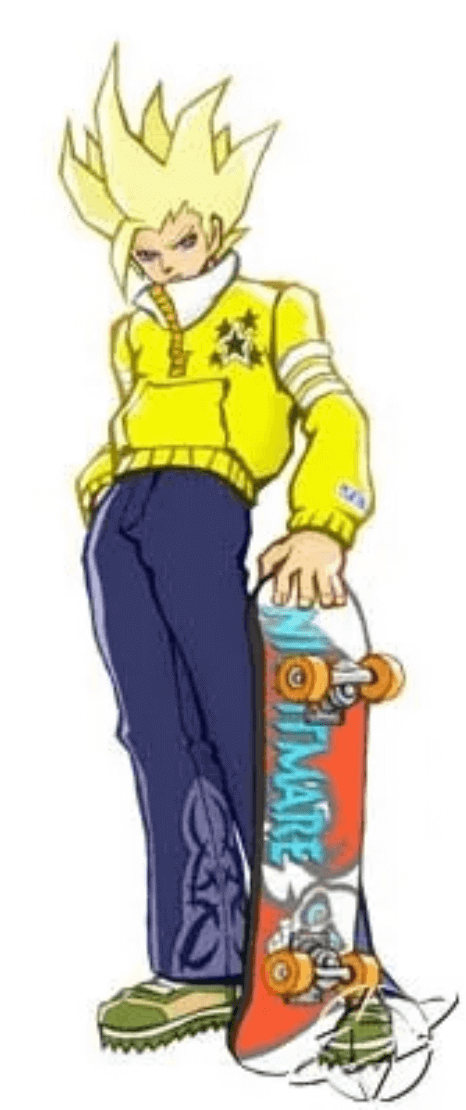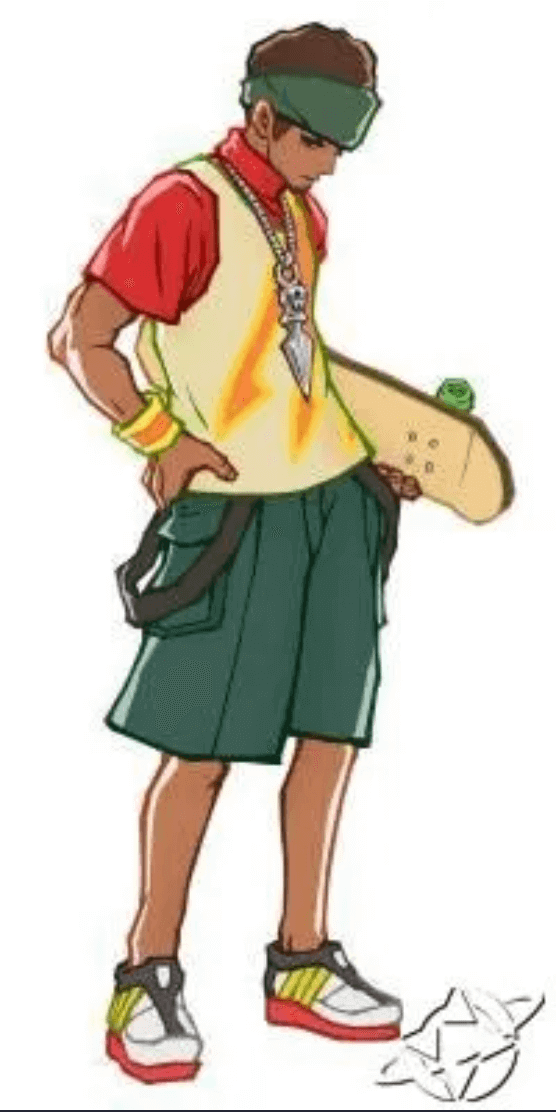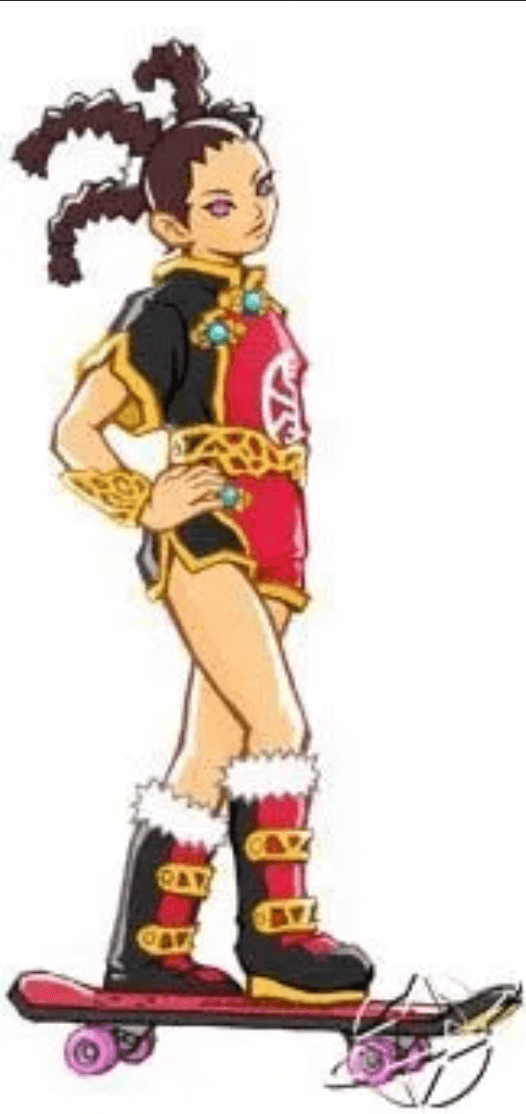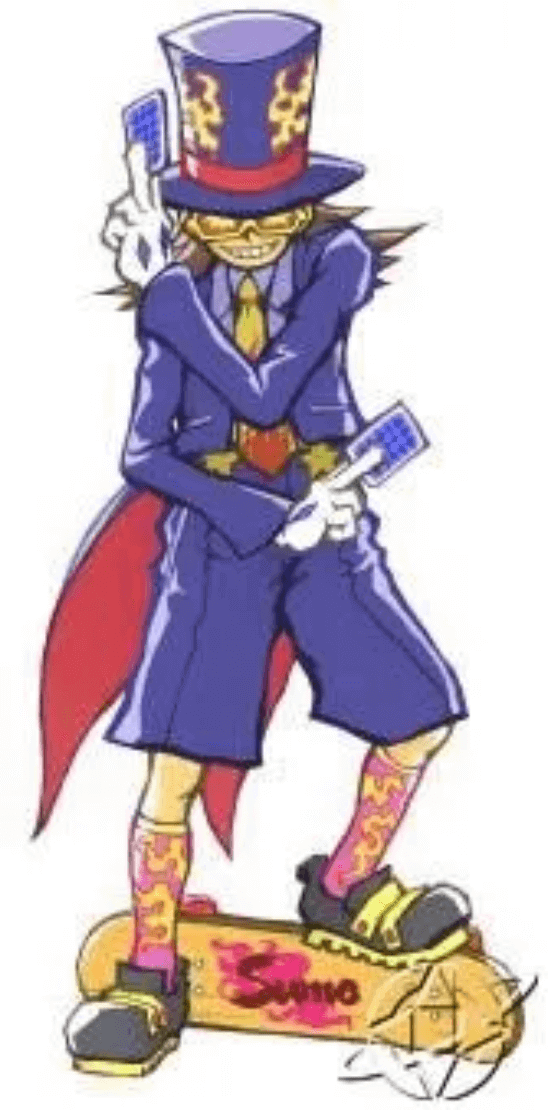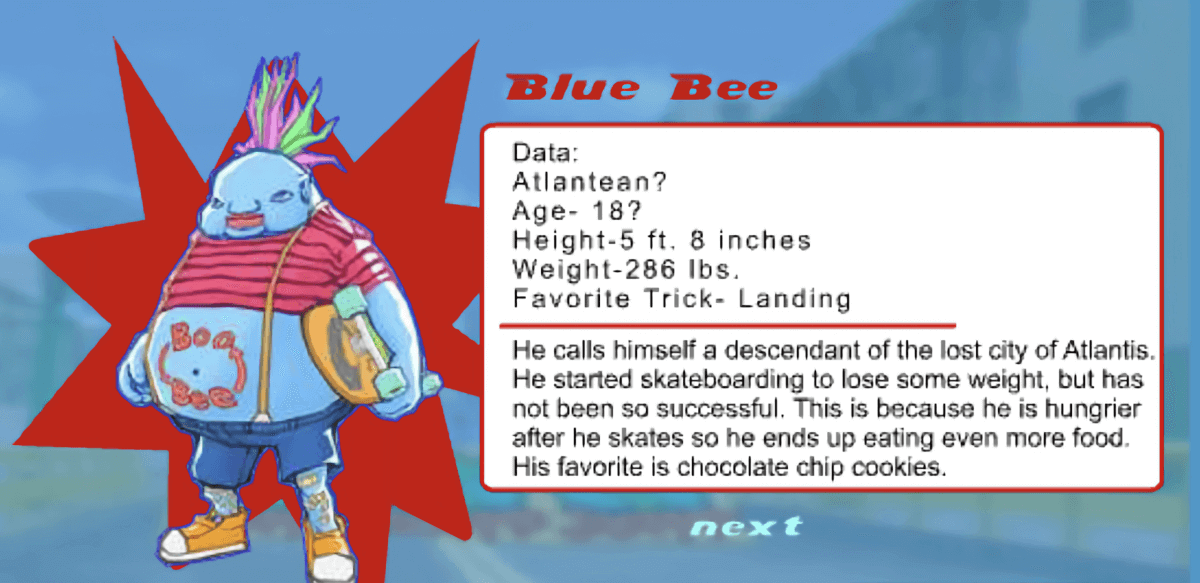Japan’s Top Skater opened the floodgates for the 3D era of skateboarding games, but by 2001, Tony Hawk’s Pro Skater series was the king, spawning two sequels, endless copycats and even getting Konami to awkwardly put Solid Snake on a board. While some competitors tried to introduce fresh mechanics to the formula, they all adhered to a similar formula established by the iconic Neversoft series. In 2001, bullet-hell legends CAVE Interactive decided to try something different, in the process releasing one of the weirdest games to ever feature a skateboard: Yanya Caballista featuring Gawoo.
- Yanya Caballista – Advertisement 1
- Yanya Caballista – NA Box Art
- Yanya Caballista – Poster
Though CAVE were best known for legendary shooters like DoDonPachi, they were no stranger to extreme sports games, releasing Steep Slope Sliders in 1997 for the Sega Saturn and arcades, Trick’n Snowboarder in 1999 for the Sony PlayStation (both games directed by Yasuyuki Hirota, who directed Yanya Caballista) and Snowboard Heaven for the PlayStation 2 in 2000. These games were relatively well received, but were mostly tailored to a western audience and lacked defining flair. 2001’s Yanya Caballista featuring Gawoo (Yanya Caballista: City Skater in North America) took things in another direction entirely.
The Fingerboard Peripheral
One feature that immediately set Yanya Caballista apart from its peers was its controller peripheral: a finger-board you attached to the analog sticks. The player would turn their DualShock 2 on its side with the fingerboard attached, adding an element of simulation to a game that arguably didn’t need it. Crucially, the settings offer an alternative control scheme that is not necessarily less confusing, but does at least allow you to hold your controller correctly. The peripheral was included in the box, but wasn’t particularly well liked, with one critic saying “though a novel concept, [the fingerboard] crucifies any attempt to master the simplistic trick system.”
The game’s plot would’ve made for a killer b-movie. You play as one of seven characters in an alien invasion plot, where the only hope of driving away the titular Gawoos is to excite them with radical skateboard moves until they explode. In each level, all set in New San Francisco, players race against the clock stoking the Gawoos to death until only a boss Gawoo remained. While the plot has very little in the way of authentic representation of skateboarding culture, the idea of an extreme sports game having a plot at all was relatively novel in 2001, and the character designs were genuinely badass (thumbnails courtesy of IGN).
- Yanya Caballista – Aimee
- Yanya Caballista – Bluebee
- Yanya Caballista – Clarice
- Yanya Caballista – Granny B
- Yanya Caballista – Jet
- Yanya Caballista – Max
- Yanya Caballista – Mei Fa
- Yanya Caballista – Mr Honda
Gameplay: Unique but Frustrating
The gameplay itself feels decidedly off. Matt from Game Informer said, “[Playing] Yanya Caballista treads the fine line between unique and “It sucks!” like a drunken sailor on shore leave.” While earth-bound, your board moves fluidly and reacts as you might expect, but as soon as your wheels leave the ground, its like the entire laws of physics are rewritten, making for an awkward and incongruous experience.
To unlock four of the seven playable characters you have to complete a 44-part tutorial, which frustratingly doesn’t go a long way in making the player feel any more comfortable with the game’s asinine control scheme. Every decision regarding gameplay seems to be designed to be distinct from Tony Hawk’s easily-mastered controls, ultimately at the cost of playability.
Aesthetically, the game employs a cel-shaded style reminiscent of Jet Set Radio, but with even more outlandish character design and a significantly less memorable soundtrack. One reviewer said of the visuals, “an amalgamation of Space Channel 5 and Jet Grind Radio created by Bugs Bunny visionary Chuck Jones.” and as weird as that sounds, it’s pretty much on the money. The same Game Informer review noted, “the graphics are deliciously warped, with rubbery skyscrapers lurching out at odd angles like some weird architectural nightmare”.
Playing Yanya Caballista Today
The Koei-published Yanya Caballista didn’t make much of a mark on release, and likely won’t be considered revolutionary upon future revisits. In America, it beat Tony Hawk’s Pro Skater 3 to market by a month, but it wasn’t enough to dull the hype surrounding the Birdman’s third outing. Scott Steinberg of Next Generation rightfully called it “a bonzo extreme product so foreign in origin and design that it could pass for a Kia.”
Ultimately, it was CAVE’s final foray into extreme sports games, as they shifted focus to primarily bullet hell shooters. Unlike the last two entries in this series, the game has very little legacy and arguably no impact on the genre as a whole, but it stands out as an unabashedly weird, original take on skateboard games.
Yanya Caballista is easy enough to emulate (just make sure to switch the control scheme before you get started) but much harder to recommend. Still, for anyone interested in the genre as a whole, it’s worth checking out at least once. Then, once you’ve had enough, fire up the recently remastered Tony Hawk’s Pro Skater 3 + 4, in this writer’s humble opinion, the two greatest skateboarding games ever made.
